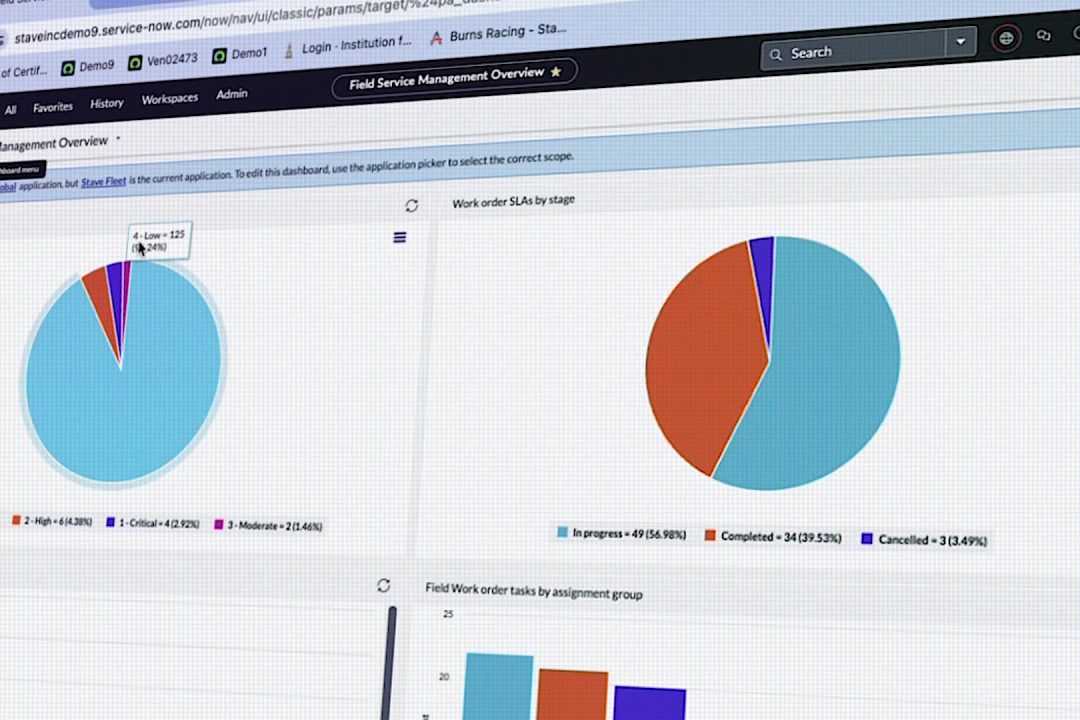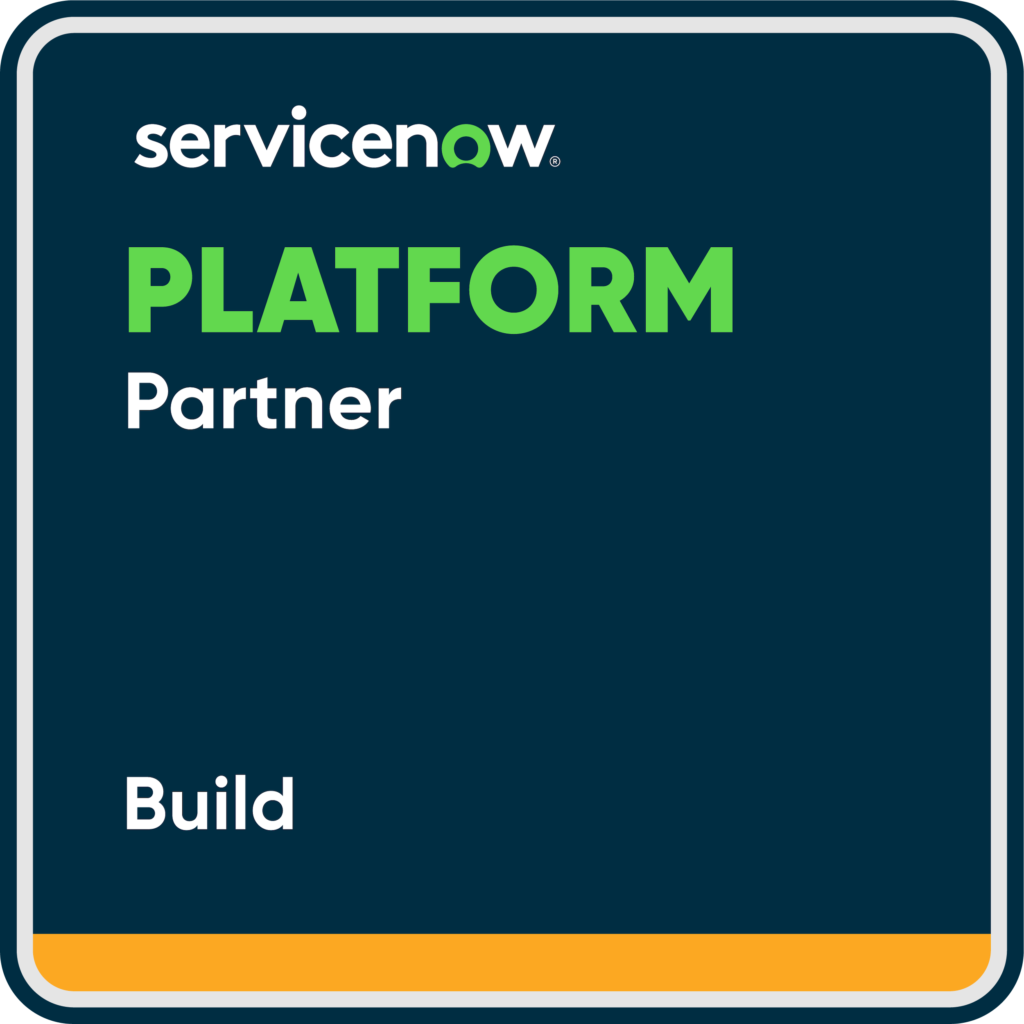Maintaining an enterprise fleet often feels like running a constant fire drill: surprise breakdowns, scattered service data, and last-minute work orders derail schedules and drive up costs. But it doesn’t have to be this way. By unifying maintenance processes on the ServiceNow platform, organizations can shift from reactive chaos to proactive control—keeping vehicles on the road, costs down, and customers happy.
The Challenge of Traditional Fleet Maintenance
-
Fragmented Systems
Service histories live in ERP modules, work orders in legacy CMMS tools, and driver reports in overflowing inboxes. -
Reactive Repairs
Missed oil changes or filter swaps turn into emergency breakdowns—triggering expedited parts orders and unplanned technician overtime. -
Coordination Overhead
Fleet managers spend hours reconciling spreadsheets and chasing status updates instead of optimizing schedules. -
Scaling Difficulties
As fleets grow into the hundreds or thousands, manual processes buckle under the volume—leading to costly downtime and eroded customer trust.
A Unified Command Center on ServiceNow
Enterprises are replacing that complexity with a single Fleet Manager application built on ServiceNow. This command center brings together every maintenance task, record, and alert—driving consistency, efficiency, and visibility at scale.
Key Capabilities
-
Automated Preventive Scheduling
Define mileage, engine-hour, or sensor-based triggers to generate service tasks without manual intervention. -
Real-Time Repair Histories
Every completed work order, part replacement, and service bulletin is logged and searchable. -
Integrated Work-Order Management
Dispatchers assign jobs, monitor SLAs, and rebalance technician workloads from one intuitive dashboard. -
Failure-Prediction Alerts
Telematics and IoT sensor data surface early warning signs—letting you fix small issues before they become major breakdowns. -
Complete Asset Visibility
View the status, location, and maintenance backlog for every vehicle—across depots, regions, and business units.
Real-World Impact at Enterprise Scale
-
Global Refrigerated Logistics
Automated scheduling based on engine-cooling cycles cut emergency refrigeration repairs by 40% and reduced breakdown costs by 25%. -
Fortune-level Utilities Provider
Role-based alerts for safety certifications and chassis inspections drove a 30% decline in unplanned downtime and boosted technician productivity by 20%. -
National Transit Authority
Mobile inspections with geotagged photos enabled audit-ready reports in minutes and slashed delayed routes by 35%.
Across each use case, teams saw fewer surprise repairs, smoother technician workflows, and substantial cost savings.
Watch this Quick Fleet Maintenance Video Reel:
To see these features in action, watch our 2-minute Fleet Maintenance demo below. You’ll see how a single, ServiceNow-powered dashboard transforms maintenance from guesswork into data-driven precision.
Getting Started with Proactive Maintenance
-
Map Your Current Processes
Document inspection routines, approval workflows, and reporting needs to identify automation opportunities. -
Configure Maintenance Triggers
Align task generation with OEM guidelines and operational realities—using mileage, hours, or sensor thresholds. -
Pilot with a Subset of Assets
Validate integrations and refine alert cadences before rolling out across the entire fleet. -
Train Your Teams
Provide role-based onboarding for administrators, dispatchers, and field technicians. -
Measure and Iterate
Track KPIs like mean time between failures (MTBF), maintenance cost per mile, and unplanned-downtime rates to optimize continuously.
Measuring Success: KPIs That Matter
To demonstrate real value—and secure ongoing executive support—track these core metrics:
-
Unplanned Downtime Reduction: Compare total downtime hours before and after implementation to quantify availability improvements.
-
Mean Time Between Failures (MTBF): Monitor intervals between service-stopping events to gauge equipment reliability gains.
-
Maintenance Cost per Mile: Calculate per-vehicle expenses to verify cost savings from optimized scheduling and reduced emergency repairs.
-
Technician Utilization Rate: Measure the percentage of productive work versus idle or administrative time to confirm workflow efficiencies.
-
Compliance & Audit Readiness: Track on-time completion of inspections and certifications to ensure regulatory adherence and avoid fines.
Building Your Proactive Maintenance Roadmap
-
Secure Stakeholder Alignment: Present anticipated ROI and risk-mitigation outcomes to leadership for budget and resource approval.
-
Select a Pilot Cohort: Choose a representative subset of assets—by region, vehicle type, or business unit—to validate integrations and processes.
-
Configure & Integrate: Work with IT and operations teams to connect telematics feeds, ERP/CMMS data, and mobile inspection apps into ServiceNow.
-
Train & Empower Users: Roll out role-based training for dispatchers, technicians, and managers; gather feedback to refine workflows.
-
Scale & Optimize: Expand the solution enterprise-wide, continuously monitoring KPIs and tuning alert thresholds to drive incremental improvements.
Ready to see how Stave’s Fleet Manager can transform your maintenance operations?
Visit our Fleet Manager page to explore features and schedule your personalized demo today.



